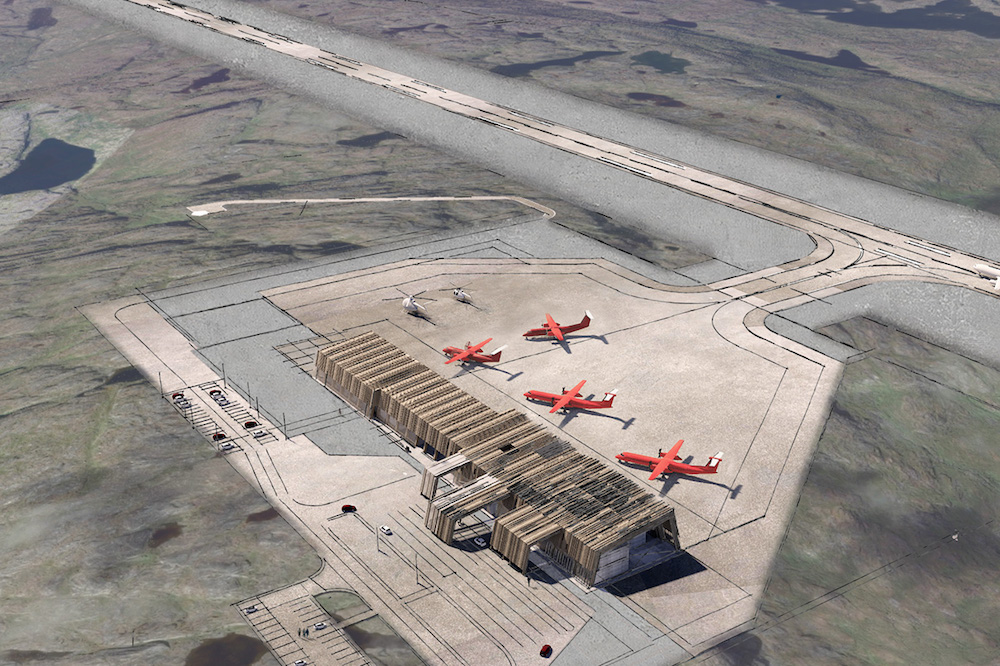Shorter runway on horizon for new southern Greenland airport
A 1,500-meter runway in Qaqortoq could be 40 percent more expensive than planned. Lawmakers will now consider a proposal for a shorter runway that could still accommodate larger planes.

Greenlandic lawmakers made a wise decision in 2018 when they voted to move an airport in the southern part of the country from its current, remote location to the regional population center, but the airport they approved for construction is likely the most expensive of the alternatives that were available to them, a study by consulting firm Deloitte has concluded.
Moving the airport from Narsarsuaq to Qaqortoq will save at least 52 million kroner (8.31 million) annually in terms of shorter travel times for passengers, as well as lower costs of upkeep and other expenses for the Self-Rule Authority. However, going ahead with the plan to build an airport terminal and 1,500-meter runway in Qaqortoq will likely be 40 percent more expensive than planned.
The higher-than-planned cost of establishing the runway and maintenance can be expected to add additional costs of 1 billion kroner over 30 years.
The Deloitte study was commissioned in June after none of the bids in a second call for tenders to build the Qaqortoq regional airport fell within the 669 million kroner budget set by the national assembly for its construction. A contractor was to have been selected in September 2020 after the initial call for tenders, but the process was halted after all five bids were found to “significantly exceed” the projected cost.
[Greenland’s airports: Unexpected turbulence]
The Qaqortoq airport was approved as a replacement for the airport in Narsarsuaq as part of a 3.6 billion kroner agreement that will also upgrade the airports in Nuuk, the capital, and Ilulissat, a major travel destination, as part of the country’s largest infrastructure project ever.
Established during World War II by the U.S. military as a stopover for airplanes making transatlantic flights, Narsarsuaq’s remote location requires passengers traveling on to Qaqortoq to board a connecting helicopter or ferry. Pilots consider it a notoriously difficult place to land.
The longer runway in Qaqortoq would mean shorter travel times for passengers, which would reduce the total amount of additional costs to 292 million kroner. But a shorter runway would be a better overall value, according to Deloitte.
“The runway that is planned right now makes the least economic sense, even if it makes most sense in terms of interoperability and long-term viability,” the report states.
[Greenland’s airport upgrade project braces for major cost overruns]
Interoperability is an evaluation of how well the airport can be incorporated into Greenland’s existing network of travel infrastructure and whether the types of planes used by airlines that service Greenland can land there. Long-term viability is a prediction of how well the airport can be expected to hold up in the face of developments in airplane technology and the travel industry.
Deloitte recommends building either a 1,199 meter-long runway, which would require meeting fewer safety requirements than 1,200 meters would, or a 1,000-meter runway.
The longer of the two would still see the Self-Rule Authority paying more to establish and fund operation of the airport than could be expected to be recouped through gains for passengers, but Deloitte reckons that, on balance, it is the best overall choice.
“Seen from the perspective of operability and long-term viability, the 1,199-meter runway is a better investment than 1,000-meter runway, since the [longer] runway length means larger planes can land there,” the report said. “That would make the possibility of direct routes to Iceland more likely, which could play a role in the number of people visiting the area.”
[Nuuk airport upgrade delayed a year]
An 800-meter runway (officially 799 meters) would be profitable for the Self-Rule Authority to build and operate, but, according to Deloitte, it is a poor investment, given that few types of passenger planes can land on a runway that short.
Najaa Nathanielsen, the infrastructure minister, told local media the report made a solid case for a shorter runway than approved by the national assembly but said the final decision would be up to legislators.
“Our task now is to make a decision,” she said in a statement issued in connection with the publication of the study. “The decision will affect the daily lives of people in southern Greenland for decades, so we need to get a sense of what the various positions are and what their impacts will be. It will be difficult, but not doing anything isn’t an option.”